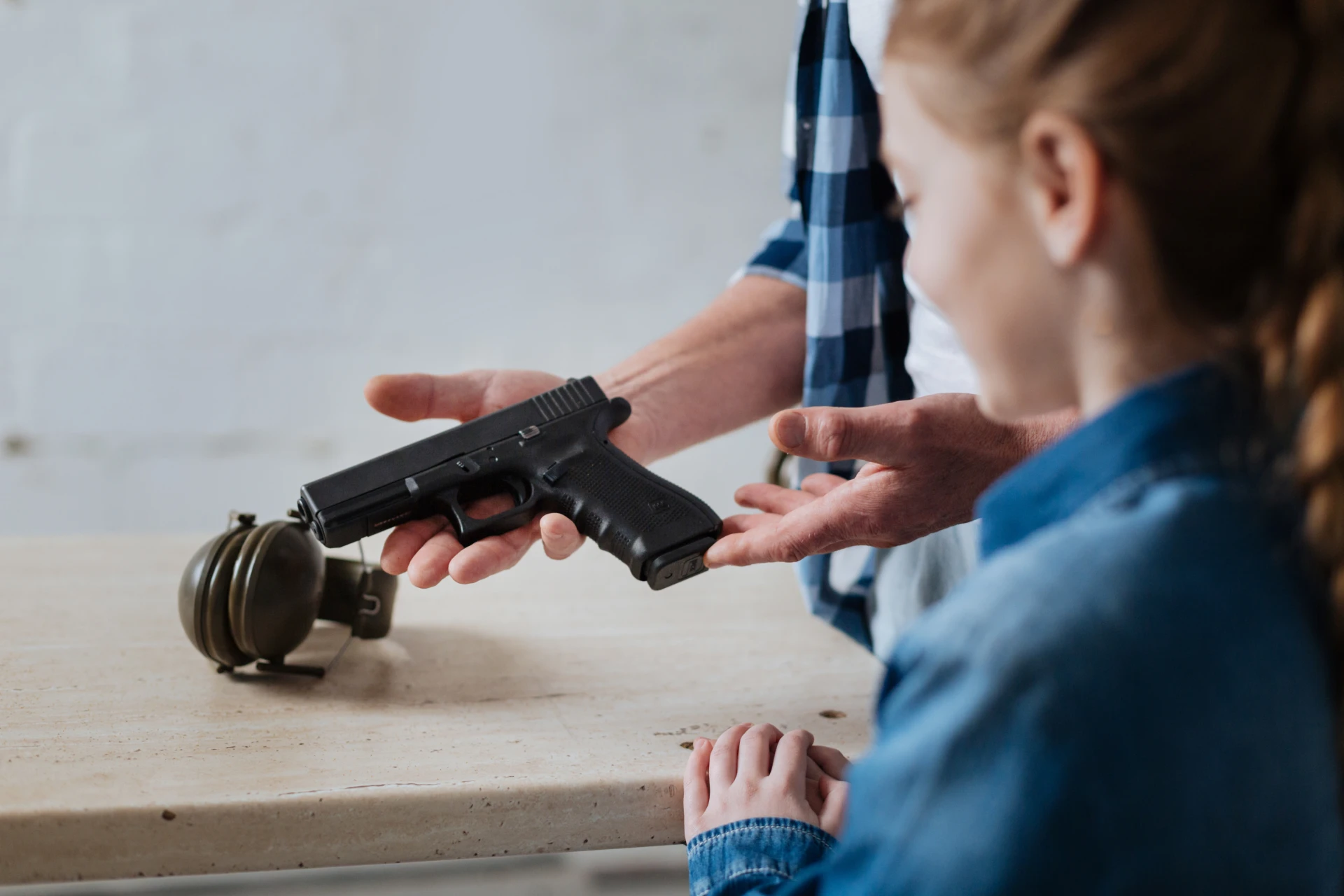Preventing Accidental Shootings at Home: A Parent’s Guide
Learn how parents can prevent accidental shootings at home through safe storage, youth firearm safety education, and disciplined training. Condition 3 shows you how.
Introduction: The Hidden Risk in American Homes
Every year, thousands of children and family members are injured in preventable firearm accidents. According to national data, unintentional shootings outnumber defensive gun uses by more than 14 to 1. Most of these incidents happen not in dark alleys or crime scenes — but inside homes, where families should feel safest.
For parents, the responsibility is clear: protecting children and preventing tragedy begins with disciplined firearm safety at home. This guide outlines practical steps, proven methods, and the Condition 3 approach to creating a safer environment for your family.

Core Principles for Preventing Accidents at Home
1. Secure Firearms at All Times
The simplest way to prevent accidents is also the most effective: lock and secure firearms. Parents should use:
-
Gun safes (key, combination, or biometric).
-
Trigger locks or chamber locks.
-
Secure cabinets for ammunition.
Condition 3 emphasizes that safety devices are not optional accessories — they are essential layers of protection.
2. Adopt Condition 3 Carry and Staging
Carrying with a loaded magazine but empty chamber (Condition 3) dramatically reduces risk inside the home. A chambered round left unattended creates immediate danger. Condition 3 staging ensures firearms are ready if needed but not instantly lethal in daily environments.
3. Educate Children Early and Honestly
Fear is not education. Children need clear, age-appropriate instruction:
-
Teach Stop, Don’t Touch, Leave, Tell as soon as they can follow directions.
-
Reinforce the permanence of firearms: “A round that leaves the chamber never comes back.”
-
Remove mystery — honest conversations reduce curiosity.
Condition 3’s Youth Firearm Safety Program provides structured modules that turn lessons into habits.
4. Create a Family Safety Plan
Firearm safety must be part of your home’s emergency planning. Families should practice:
-
What to do if a child encounters a firearm at a friend’s house.
-
Where to go and who to call in a home emergency.
-
Communication signals for stressful situations.
When safety is rehearsed, panic is replaced by confidence.
5. Model Responsibility Every Day
Parents are the most powerful teachers. If children see firearms handled casually or stored irresponsibly, they will mimic that behavior. Families must:
-
Demonstrate consistent safe handling.
-
Never point or display firearms unnecessarily.
-
Show discipline by prioritizing training and preparation over ego.
The Role of Training in Home Safety
Even with safes and rules in place, training is what transforms good intentions into daily discipline.
-
Adult Firearm Responsibility Programs teach parents how to carry and store safely, de-escalate threats, and create safe home defense plans.
-
Youth Programs ensure children know how to respond when they see a firearm, whether at home, at school, or at a friend’s house.
-
Community Engagement Workshops reinforce lessons across neighborhoods, creating a safety culture that extends beyond the home.
Without structured training, even the best safety intentions can fail under stress.
Common Myths Parents Must Overcome
-
“My kids don’t know where the guns are.”
Studies prove that children often discover firearms hidden in drawers, closets, or vehicles. -
“I told them not to touch it, so they won’t.”
Curiosity is stronger than warnings. Without drills, children lack automatic safe responses. -
“I keep it chambered because I don’t have time in an emergency.”
With Condition 3 training, civilians can draw, rack, and present in under 1.5 seconds — balancing safety and readiness. -
“Locks and safes take too long.”
Modern safes and biometric devices provide instant access while maintaining security.
Building a Culture of Safety at Home
Preventing accidental shootings isn’t a one-time lecture. It’s a culture families must live daily:
-
Consistency: Every firearm is treated the same — locked, staged, respected.
-
Conversation: Safety is an ongoing discussion, not a taboo.
-
Community: Families can share practices, reinforce standards, and normalize responsibility.
When safety becomes culture, accidents become rare exceptions instead of recurring headlines.
The Condition 3 Approach to Home Gun Safety
At Condition 3, we believe safety is freedom. By reducing preventable accidents, families preserve both lives and liberties. Our programs are built on the creed:
-
Train with discipline.
-
Prepare with awareness.
-
Protect with integrity.
For parents, this means committing to structured education that puts children first, enforces safe storage, and models responsible carry.
Conclusion: Parents Hold the Key to Prevention
Accidental shootings are not inevitable. They are preventable — through secure storage, honest education, disciplined carry, and structured training.
As parents, you hold the key. By leading with discipline and investing in your family’s safety, you not only protect your children today, but also build a safer future for your community.
Condition 3 is here to guide that journey. Together, we can make accidental shootings the rare exception instead of the tragic headline.
Related Articles
A better world, Starts with Us.
Get In Touch Today.
If you want more information about Condition 3, our mission, our services, or how you or your organization can get involved, please contact us below.
